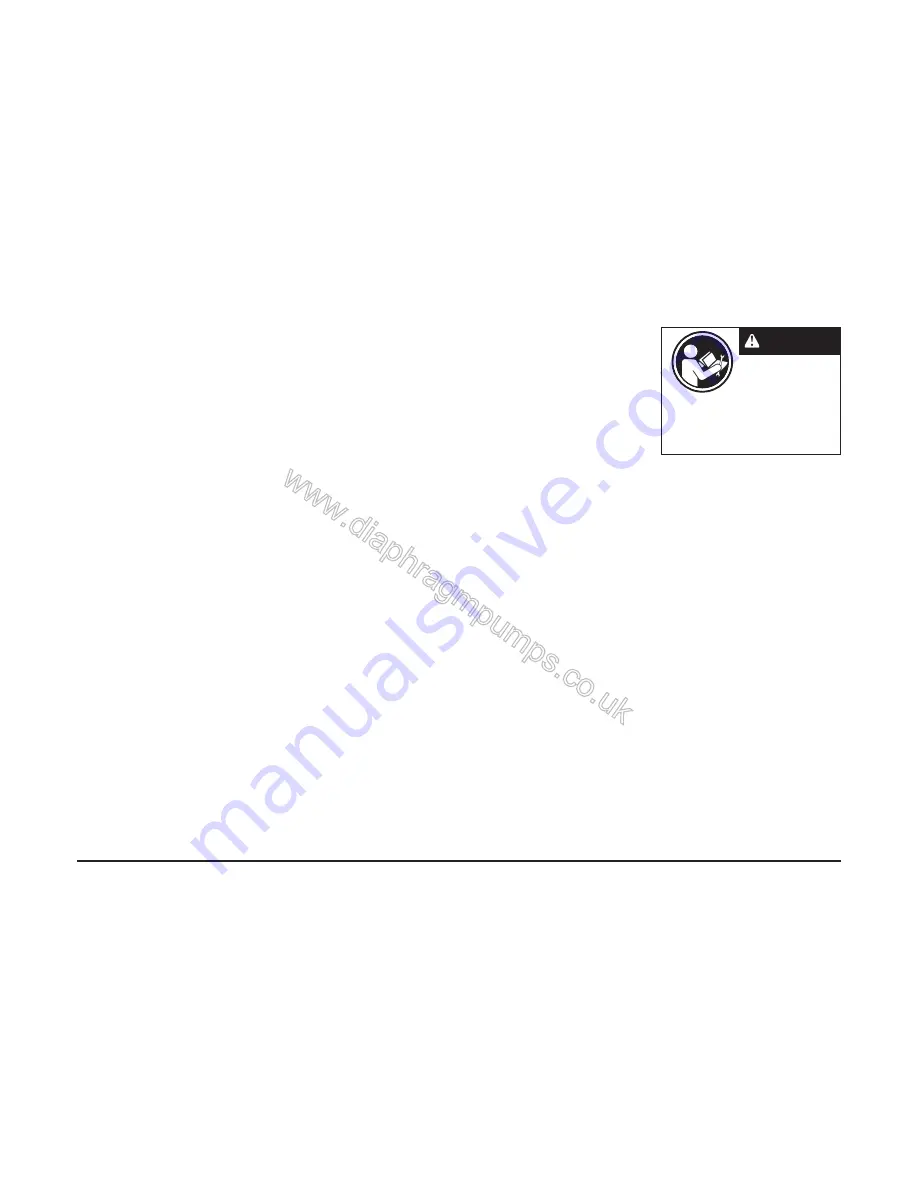
s30nmdl2sm-REV0808
Model S30 Non-Metallic Page 28
DIAPHRAGM SERVICING
To service the diaphragms first
shut off the suction, then shut off the
discharge lines to the pump. Shut
off the compressed air supply, bleed
the pressure from the pump, and
disconnect the air supply line from the
pump. Drain any remaining liquid from
the pump.
Step #1:
See the pump composite
repair parts drawing, and the diaphragm
servicing illustration.
Using a
9
/
16
" wrench or socket,
remove the 16 capscrews (items 11),
hex nuts and washers that fasten the
elbows (items 19) to the outer chambers
(items 15). Remove the elbows with the
manifolds and spacers attached.
Step #2:
Removing the outer
chambers.
Using a
9
/
16
" wrench or socket,
remove the 20 capscrews (items 9 &
12), hex nuts and washers that fasten
the outer chambers, diaphragms, and
inner chambers (items 16) together.
Step #3:
Removing the diaphragm
assemblies.
Use a 1
3
/
8
" (35mm) wrench or six
pointed socket to remove the diaphragm
assemblies (outer plate, diaphragm,
and inner plate) from the diaphragm rod
(item 33) by turning counterclockwise.
Insert a 1/4-20 capscrew or set
screw into the smaller tapped hole in
the inner diaphragm plate (item 30).
Insert the protruding stud and the 1/4-
20 fastener loosely into a vise. Use a
1
3
/
8
" wrench or socket to remove the
outer diaphragm plate (item 29) by
turning counterclockwise. Inspect the
diaphragm (item 17) for cuts, punctures,
abrasive wear or chemical attack.
Replace the diaphragms if necessary.
Step #4:
Installing the diaphragms.
Push the threaded stud of the outer
diaphragm plate through the center
hole of the diaphragm. Thread the inner
plate clockwise onto the stud. Use a
torque wrench to tighten the diaphragm
assembly together to 480 in Lbs. (54.23
Newton meters). Allow a minimum of 15
minutes to elapse after torquing, then
re-torque the assembly to compensate
for stress relaxation in the clamped
assembly.
Step #5:
Installing the diaphragm
assemblies to the pump.
Make sure the bumper (item 6) is
installed over the diaphragm rod.
Thread the stud of the one diaphragm
assembly clockwise into the tapped
hole at the end of the diaphragm rod
(item 33) until the inner diaphragm plate
is fl ush to the end of the rod. Insert rod
into pump.
Align the bolt holes in the diaphragm
with the bolt pattern in the inner chamber
(item 16). Make sure the molded
directional arrows on the diaphragm
point vertically.
Fasten the outer chamber (item 15)
to the pump, using the capscrews (items
9 & 12), hex nuts and fl at washers.
On the opposite side of the pump,
pull the diaphragm rod out as far as
possible. Make sure the bumper (item 6)
is installed over the diaphragm rod.
Thread the stud of the remaining
diaphragm assembly clockwise into the
tapped hole at the end of the diaphragm
rod (item 33) as far as possible and still
allow for alignment of the bolt holes
in the diaphragm with the bolt pattern
in the inner chamber. The molded
directional arrows on the diaphragm
must point vertically.
Fasten the remaining outer chamber
(item 15) to the pump, using the
capscrews (items 9 & 12), hex nuts and
fl at washers.
Step #6:
Re-install the elbow/
spacer/manifold assemblies to the
pump, using the capscrews (items 11),
hex nuts and fl at washers.
The pump is now ready to be
re-installed, connected and returned to
operation.
OVERLAY DIAPHRAGM SERVICING
The PTFE overlay diaphragm (item
18) is designed to fi t snugly over the
exterior of the standard TPE diaphragm
(item 17).
The molded directional arrows
on the overlay diaphragm must point
vertically.
Follow the same procedures
described for the standard diaphragm
for removal and installation.
Read these instructions
c o m p l e t e l y, b e f o r e
installation and start-up.
It is the responsibility of
the purchaser to retain
this manual for reference. Failure to comply
with the recommendations stated in this
manual will damage the pump, and void
factory warranty.
IMPORTANT
Summary of Contents for S30
Page 2: ......









































